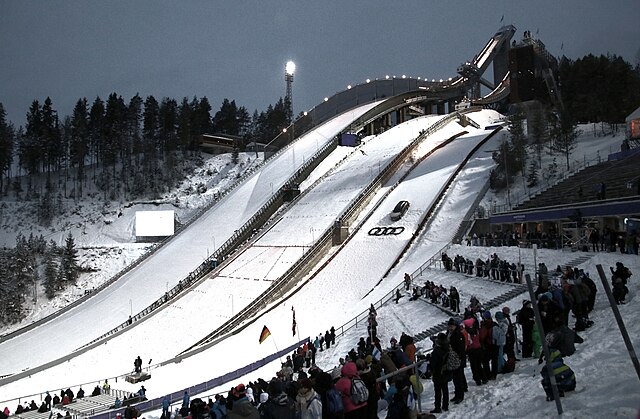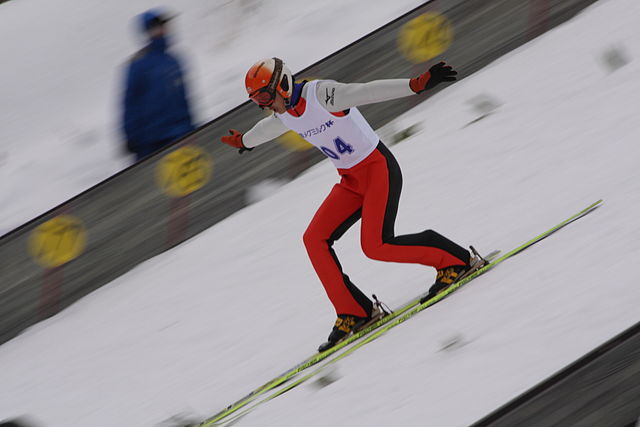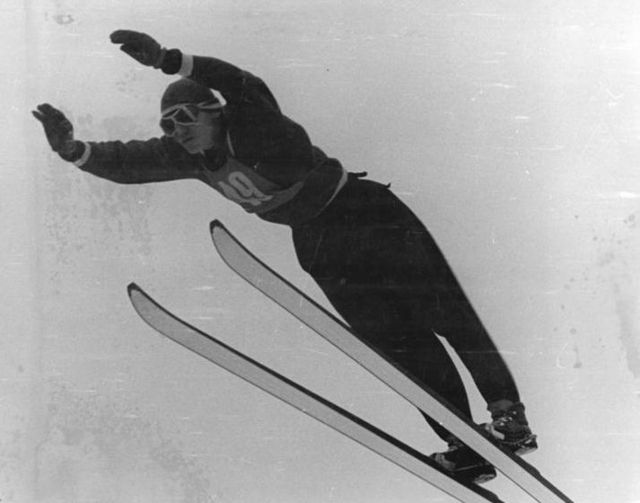A ski jumping hill is a sports venue used for ski jumping. They vary in size from temporary handmade snow structures to permanent competition venues. At the top is an in-run where the jumper runs down to generate sufficient speed, before reaching the jump. The skier is then airborne until landing on the landing slope. The last part of the hill is the out-run, which may be either flat or even uphill, allowing the jumper to stop. The steepest point of the hill is the construction point, which is used to determine the score of a particular length. The size of a hill is measured in the hill size. Hills with a hill size exceeding HS185 are designated ski flying hills; there are five such hills in the world.
The twin hills of Lysgårdsbakken in Lillehammer, Norway: the normal HS100 hill to the right, the large HS138 hill to the left
Ski jump at Puijo in Kuopio, Finland
View of the sports complex «Raubichi» from top of the ski jump in Minsk, Belarus
Ski jumping is a winter sport in which competitors aim to achieve the farthest jump after sliding down on their skis from a specially designed curved ramp. Along with jump length, competitor's aerial style and other factors also affect the final score. Ski jumping was first contested in Norway in the late 19th century, and later spread through Europe and North America in the early 20th century. Along with cross-country skiing, it constitutes the traditional group of Nordic skiing disciplines.
Peter Prevc in Titisee-Neustadt, March 2016
The Salpausselkä ski jumping hill in Lahti, Finland
Telemark landing
Kongsberger technique, used in 1920s to 1950s.







